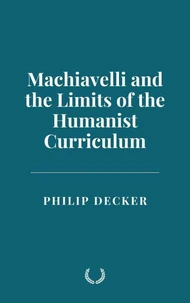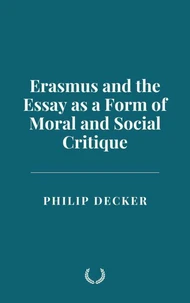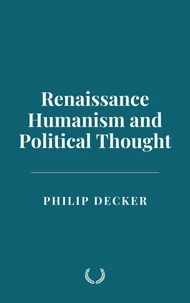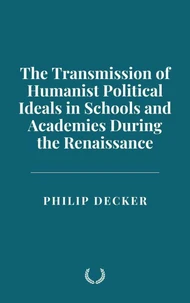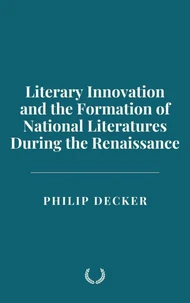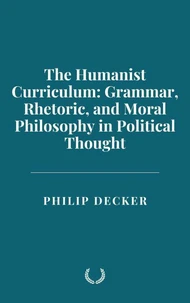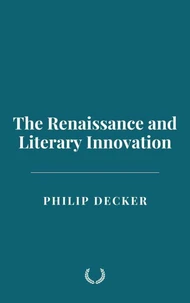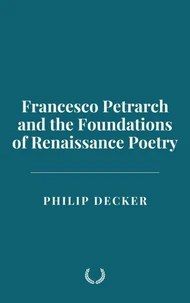The Birth of Romanticism: Art and Literature in the 18th Century
Par :Formats :
Disponible dans votre compte client Decitre ou Furet du Nord dès validation de votre commande. Le format ePub est :
- Compatible avec une lecture sur My Vivlio (smartphone, tablette, ordinateur)
- Compatible avec une lecture sur liseuses Vivlio
- Pour les liseuses autres que Vivlio, vous devez utiliser le logiciel Adobe Digital Edition. Non compatible avec la lecture sur les liseuses Kindle, Remarkable et Sony
 , qui est-ce ?
, qui est-ce ?Notre partenaire de plateforme de lecture numérique où vous retrouverez l'ensemble de vos ebooks gratuitement
Pour en savoir plus sur nos ebooks, consultez notre aide en ligne ici
- FormatePub
- ISBN8230530442
- EAN9798230530442
- Date de parution14/03/2025
- Protection num.pas de protection
- Infos supplémentairesepub
- ÉditeurIndependently Published
Résumé
The Birth of Romanticism: Art and Literature in the 18th Century delves into the origins and evolution of the Romantic movement, examining how a deep cultural, intellectual, and emotional shift reshaped art, literature, and philosophy during the late 18th and early 19th centuries. Emerging as a response to the Enlightenment's emphasis on reason and order, Romanticism emphasized emotion, individualism, the sublime, and the power of nature as a source of inspiration and spiritual awakening.
This book explores key themes in Romanticism, including the birth of the Gothic novel, the rise of the Romantic hero, the influence of nationalism and folklore, and the rejection of classical artistic traditions. Through an analysis of seminal figures such as William Wordsworth, Samuel Taylor Coleridge, Lord Byron, Mary Shelley, and Friedrich Schiller, the book highlights the ways in which Romantic writers and artists sought to explore the inner workings of the human soul, the mysteries of nature, and the turbulent emotions of the individual.
The Romantic era is presented not only as a movement of artistic expression but as a period that influenced political change, intellectual revolutions, and the broader understanding of human freedom and creativity. Tracing the connections between Romantic ideals and later cultural, literary, and philosophical developments, the book illustrates how the themes of the Romantic era continue to resonate today in movements like modernism, existentialism, and popular culture.
Romanticism's legacy of challenging conventions, embracing individuality, and prioritizing personal expression laid the foundation for the ways we engage with art, culture, and society in the modern world.
This book explores key themes in Romanticism, including the birth of the Gothic novel, the rise of the Romantic hero, the influence of nationalism and folklore, and the rejection of classical artistic traditions. Through an analysis of seminal figures such as William Wordsworth, Samuel Taylor Coleridge, Lord Byron, Mary Shelley, and Friedrich Schiller, the book highlights the ways in which Romantic writers and artists sought to explore the inner workings of the human soul, the mysteries of nature, and the turbulent emotions of the individual.
The Romantic era is presented not only as a movement of artistic expression but as a period that influenced political change, intellectual revolutions, and the broader understanding of human freedom and creativity. Tracing the connections between Romantic ideals and later cultural, literary, and philosophical developments, the book illustrates how the themes of the Romantic era continue to resonate today in movements like modernism, existentialism, and popular culture.
Romanticism's legacy of challenging conventions, embracing individuality, and prioritizing personal expression laid the foundation for the ways we engage with art, culture, and society in the modern world.
The Birth of Romanticism: Art and Literature in the 18th Century delves into the origins and evolution of the Romantic movement, examining how a deep cultural, intellectual, and emotional shift reshaped art, literature, and philosophy during the late 18th and early 19th centuries. Emerging as a response to the Enlightenment's emphasis on reason and order, Romanticism emphasized emotion, individualism, the sublime, and the power of nature as a source of inspiration and spiritual awakening.
This book explores key themes in Romanticism, including the birth of the Gothic novel, the rise of the Romantic hero, the influence of nationalism and folklore, and the rejection of classical artistic traditions. Through an analysis of seminal figures such as William Wordsworth, Samuel Taylor Coleridge, Lord Byron, Mary Shelley, and Friedrich Schiller, the book highlights the ways in which Romantic writers and artists sought to explore the inner workings of the human soul, the mysteries of nature, and the turbulent emotions of the individual.
The Romantic era is presented not only as a movement of artistic expression but as a period that influenced political change, intellectual revolutions, and the broader understanding of human freedom and creativity. Tracing the connections between Romantic ideals and later cultural, literary, and philosophical developments, the book illustrates how the themes of the Romantic era continue to resonate today in movements like modernism, existentialism, and popular culture.
Romanticism's legacy of challenging conventions, embracing individuality, and prioritizing personal expression laid the foundation for the ways we engage with art, culture, and society in the modern world.
This book explores key themes in Romanticism, including the birth of the Gothic novel, the rise of the Romantic hero, the influence of nationalism and folklore, and the rejection of classical artistic traditions. Through an analysis of seminal figures such as William Wordsworth, Samuel Taylor Coleridge, Lord Byron, Mary Shelley, and Friedrich Schiller, the book highlights the ways in which Romantic writers and artists sought to explore the inner workings of the human soul, the mysteries of nature, and the turbulent emotions of the individual.
The Romantic era is presented not only as a movement of artistic expression but as a period that influenced political change, intellectual revolutions, and the broader understanding of human freedom and creativity. Tracing the connections between Romantic ideals and later cultural, literary, and philosophical developments, the book illustrates how the themes of the Romantic era continue to resonate today in movements like modernism, existentialism, and popular culture.
Romanticism's legacy of challenging conventions, embracing individuality, and prioritizing personal expression laid the foundation for the ways we engage with art, culture, and society in the modern world.




